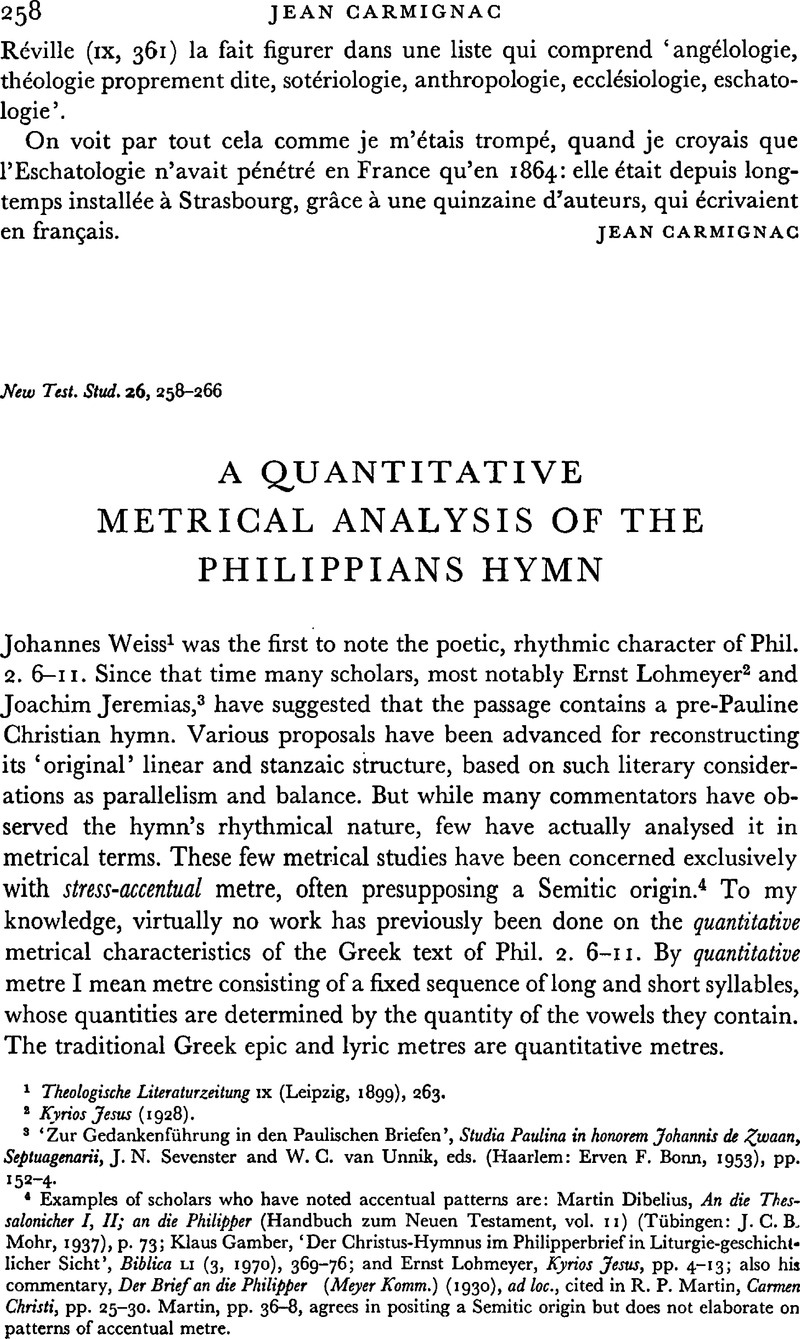Published online by Cambridge University Press: 05 February 2009

1 Theologische Literaturzeitung 9 (Leipzig, 1899), 263.Google Scholar
2 Kyrios Jesus (1928).
3 ‘Zur Gedankenführung in den Paulischen Briefen’, Studia Paulina in honorem Johannis de Zwaan, Septuagenarii, Sevenster, J. N. and van Unnik, W. C., eds. (Haarlem: Erven F. Bonn, 1953), pp. 152–4.Google Scholar
4 Examples of scholars who have noted accentual patterns are: Dibelius, Martin, An die Thessalonicher I, II; an die Philipper (Handbuch zum Neuen Testament, vol. 11) (Tübingen: J. C. B. Mohr, 1937), p. 73Google Scholar; Gamber, Klaus, ‘Der Christus-Hymnus im Philipperbrief in Liturgie-geschichtlicher Sicht’, Biblica 51 (3, 1970), 369‐76Google Scholar; and Lohmeyer, Ernst, Kyrios Jesus, pp. 4–13Google Scholar; also his commentary, Der Brief an die Philipper (Meyer Komm.) (1930), ad loc., cited in Martin, R. P., Carmen Christi, pp. 25–30Google Scholar. Martin, pp. 36–8, agrees in positing a Semitic origin but does not elaborate on patterns of accentual metre.
5 Smyth, Herbert W., Greek Grammar, revised Messing, Gordon M. (Cambridge, Mass.: Harvard University Press, 1956), §§ 142–5, 60–1, 47 D.Google Scholar
6 Raven, D. S., Greek Metre (London: Faber and Faber, 1962), p. 26.Google Scholar
7 It must be noted, however, even in the face of metrical evidence, that ùππχων adds to the euphony of the hymn, in that it introduces the ùπ-sound which recurs later in ùπήκοος (υ.8), περυψοω (υ. 9), and ὐπήρ (υ. 9).
8 See, for example, Sappho fragments 1, 2 and 16 in David Campbell, A., ed., Greek Lyric Poetry (Macmillan, 1967), pp. 4–3.Google Scholar
9 N. T. Graece ex ultima Tischendorfii recensione edidit Oscar de Gebhardt, Ed. stereot. minor, tertium emissa (Leipzig, 1895).Google Scholar
10 Dibelius, MartinAn die Thessalonicher… p. 73.Google Scholar